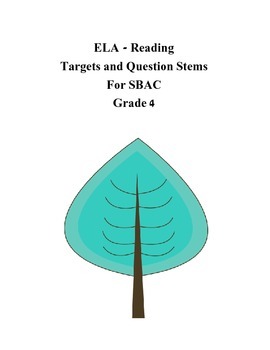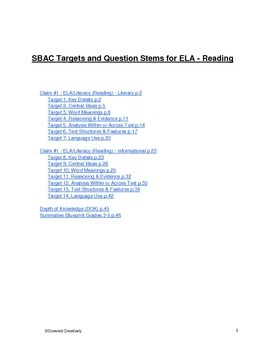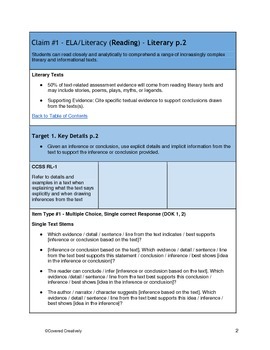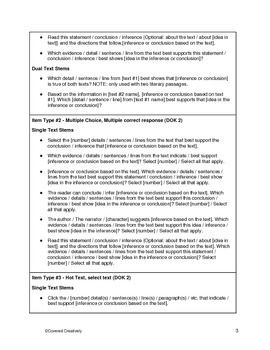Grade 4 ELA - Reading Question Stems for SBAC
Covered Creatively
11 Followers
Grade Levels
4th
Subjects
Resource Type
Standards
CCSSRL.4.1
CCSSRL.4.2
CCSSRL.4.3
CCSSRL.4.4
CCSSRL.4.5
Formats Included
- PDF
Pages
46 pages
Covered Creatively
11 Followers
Description
This printable and clickable PDF file is a compilation of ELA - Reading question stems organized by the 2 claims (Literary and Informational) and the 14 targets assessed on the Smarter Balanced Assessment (SBAC).
Each Claim is broken into the 7 Targets and includes the specific Common Core State Standards (CCSS). There are question stems for all of the item types on the SBAC including multiple choice (single and multiple response), hot text, evidence based, and short text for both single and dual texts.
***Note: This document does not contain any passages. Question stems are written in a way that allows the teacher to customize the question stems to fit any selection.
(Table of Contents includes page #'s to aid in quick reference when printed and is hot linked for pdf viewing)
Each Claim is broken into the 7 Targets and includes the specific Common Core State Standards (CCSS). There are question stems for all of the item types on the SBAC including multiple choice (single and multiple response), hot text, evidence based, and short text for both single and dual texts.
***Note: This document does not contain any passages. Question stems are written in a way that allows the teacher to customize the question stems to fit any selection.
(Table of Contents includes page #'s to aid in quick reference when printed and is hot linked for pdf viewing)
Total Pages
46 pages
Answer Key
N/A
Teaching Duration
N/A
Report this resource to TPT
Reported resources will be reviewed by our team. Report this resource to let us know if this resource violates TPT’s content guidelines.
Standards
to see state-specific standards (only available in the US).
CCSSRL.4.1
Refer to details and examples in a text when explaining what the text says explicitly and when drawing inferences from the text.
CCSSRL.4.2
Determine a theme of a story, drama, or poem from details in the text; summarize the text.
CCSSRL.4.3
Describe in depth a character, setting, or event in a story or drama, drawing on specific details in the text (e.g., a character’s thoughts, words, or actions).
CCSSRL.4.4
Determine the meaning of words and phrases as they are used in a text, including those that allude to significant characters found in mythology (e.g., Herculean).
CCSSRL.4.5
Explain major differences between poems, drama, and prose, and refer to the structural elements of poems (e.g., verse, rhythm, meter) and drama (e.g., casts of characters, settings, descriptions, dialogue, stage directions) when writing or speaking about a text.





